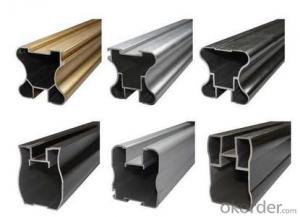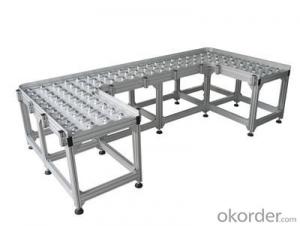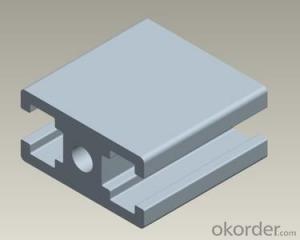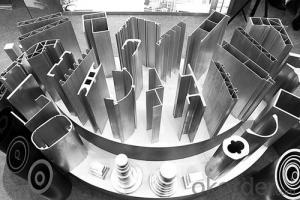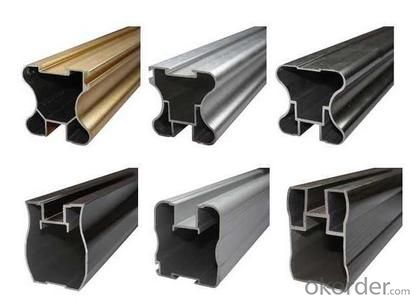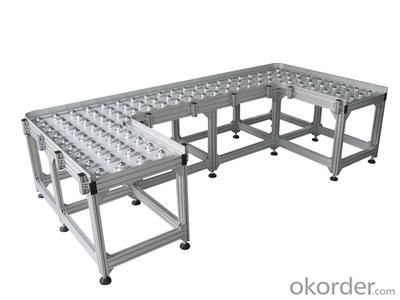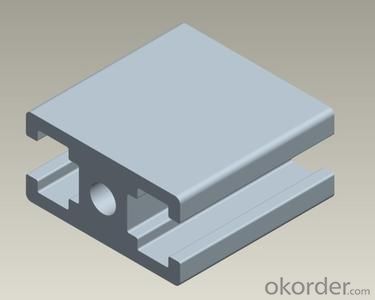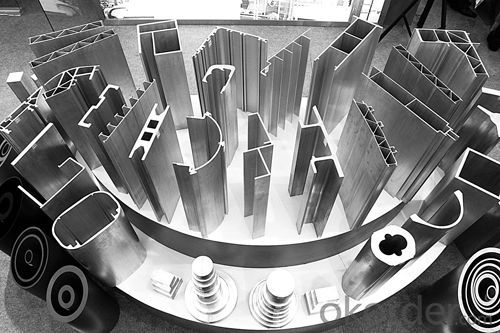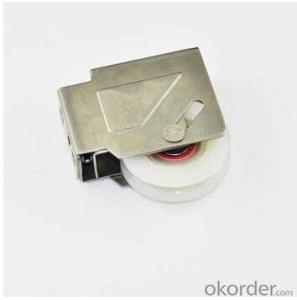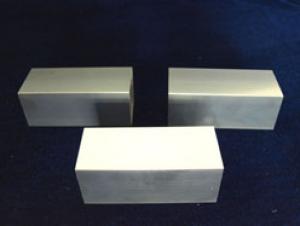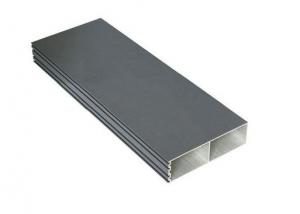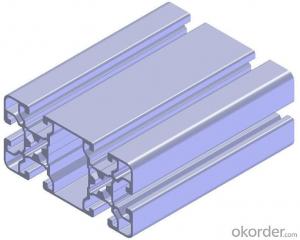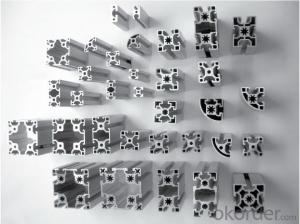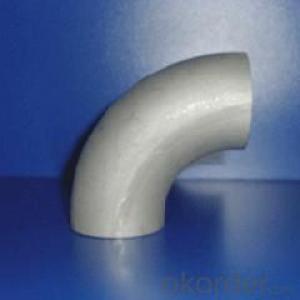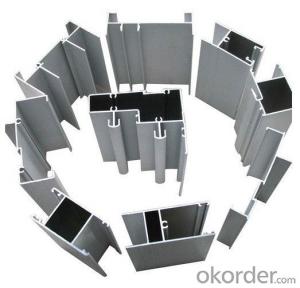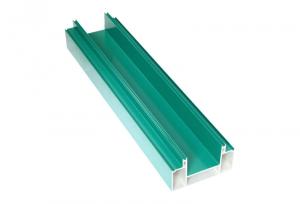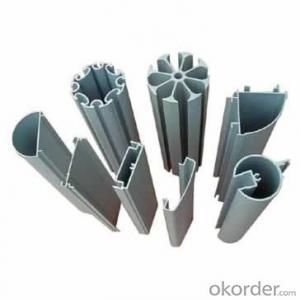Sandblasting Anodizing Aluminum Alloy Profile Accessories
- Loading Port:
- China Main Port
- Payment Terms:
- TT OR LC
- Min Order Qty:
- -
- Supply Capability:
- -
OKorder Service Pledge
OKorder Financial Service
You Might Also Like
Aluminium is a relatively soft,durable, lightweight, ductile and malleablemetal with appearance ranging from silvery to dull gray,depending on the surface roughness. It is nonmagnetic and does not easilyignite. A fresh film of aluminium serves as a good reflector (approximately92%) of visible light and an excellent reflector (as much as98%) of medium and far infrared radiation. The yield strength of pure aluminium is 7–11 MPa,while aluminium alloys have yield strengths ranging from200 MPa to 600 MPa. Aluminium has about one-third the density and stiffnessof steel. It iseasily machined,cast, drawn and extruded.
Alu Profile:
Material | Alloy 6063,6061,6005or according to customer’s choice |
Temper | T3, T4, T5, T6 |
Surface | Anodize, electrophoresis, powder coating, PVDF coating, wood grain painting, matted, etc. |
Length | Coating 6.5 meters, Anodizing 6.5 meters, Mill finish 5 meters |
Application | Industrial, electrical equipment(TV set, air conditioner, refrigerator, computer), decoration,construction, transportation |
Custom Made | We can package following with customer's request. |
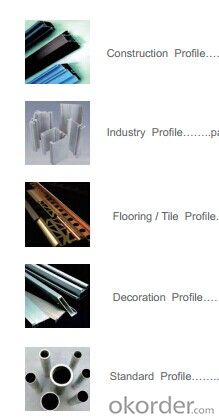
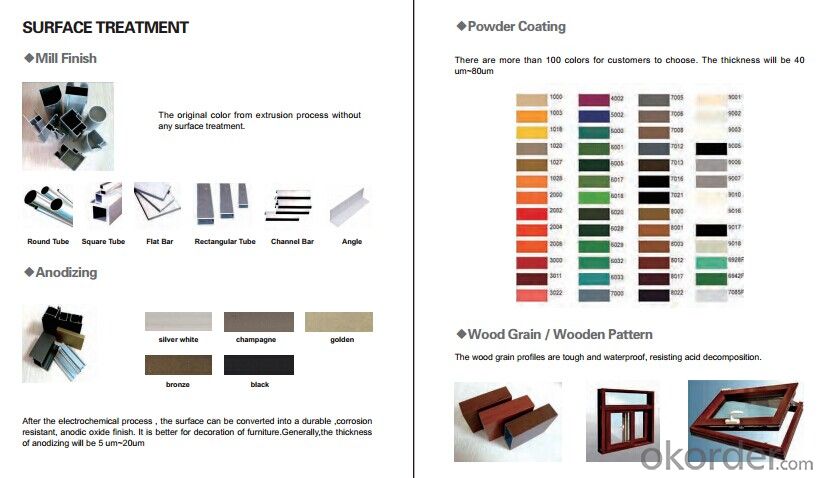
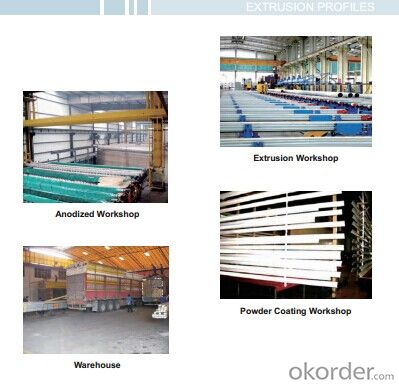
FAQ:
1. What is the form of payment?
Normally 30% TT, L/C at sight
2. Type of quotation?
FOB, CFR, CIF
3. Port of loading?
Guangzhou/Shenzhen port
4. Delivery time?
15-20 days after client’s deposit
- Q: This question seeks to understand the various types of aluminum profiles that are specifically utilized in the construction of railings and fences.
- <p>Aluminum profiles for railings and fences come in various types, each designed for specific applications and aesthetic preferences. Common types include: 1) Rectangular profiles, which are versatile for both commercial and residential settings; 2) Square profiles, offering a modern look and are often used in minimalist designs; 3) Round profiles, providing a classic appearance suitable for traditional or vintage styles; 4) Slotted profiles, which allow for easy assembly and are popular for their adjustability; 5) Hollow profiles, known for their strength and lightness, ideal for high-load applications; 6) Angled profiles, used to create corners and intersections in railing and fence designs. Each type can be further customized in terms of size, thickness, and finish to meet specific project requirements.</p>
- Q: What are the vibration damping properties of aluminum profiles?
- Aluminum profiles exhibit good vibration damping properties due to their inherent material properties, such as high stiffness and low density. These properties enable the profiles to effectively absorb and dissipate vibrations, reducing their transmission through the structure. Additionally, aluminum profiles can be further enhanced with damping materials or techniques to improve their vibration damping capabilities.
- Q: Can aluminum profiles be used in window and door manufacturing?
- Yes, aluminum profiles can be used in window and door manufacturing. Aluminum is a popular material choice for window and door frames due to its many advantages. It is lightweight, durable, corrosion-resistant, and offers excellent strength-to-weight ratio. Aluminum profiles can be easily shaped and customized to fit various window and door designs, allowing for flexibility in manufacturing. Additionally, aluminum frames are low maintenance, requiring little upkeep over their lifespan. They also have excellent thermal and sound insulation properties, making them energy-efficient and capable of reducing noise transmission. Overall, aluminum profiles are widely used in window and door manufacturing due to their versatility, durability, and performance benefits.
- Q: Are aluminum profiles resistant to impact?
- Yes, aluminum profiles are generally resistant to impact. Aluminum is known for its high strength-to-weight ratio, meaning it is strong and durable while still being lightweight. This makes it an excellent choice for applications where impact resistance is important, such as in the construction industry for window frames, doors, and curtain walls. Additionally, aluminum profiles can be further enhanced with various surface treatments and coatings to improve their impact resistance even more. However, it is worth noting that the specific impact resistance of an aluminum profile can vary depending on its thickness, design, and any additional reinforcements that may be used.
- Q: What are the health advantages of utilizing aluminum profiles in construction?
- <p>While aluminum profiles in construction do not directly provide health benefits, they can contribute to a healthier living environment indirectly. Aluminum is a non-toxic and hypoallergenic material, which means it does not emit harmful substances or cause allergic reactions. It also resists mold and mildew growth, which can improve indoor air quality. Additionally, aluminum's thermal properties can help in maintaining comfortable temperatures, reducing the need for excessive heating or cooling, which can have positive implications for energy consumption and associated health effects.</p>
- Q: How do aluminum profiles perform in terms of thermal conductivity?
- The excellent thermal conductivity of aluminum profiles is well-known. It pertains to a material's capacity to transmit heat. Aluminum possesses a notable value of thermal conductivity, enabling efficient heat transfer from one point to another. This characteristic renders aluminum profiles extremely appropriate for applications necessitating heat dissipation or transfer, such as in the fabrication of heat sinks, radiators, or electrical components. Moreover, the high thermal conductivity of aluminum profiles facilitates quicker and more effective cooling, thus making them ideal for thermal management applications.
- Q: Are aluminum profiles resistant to chemicals and acids?
- Yes, aluminum profiles are generally resistant to chemicals and acids. Aluminum has a natural oxide layer that provides corrosion resistance, making it suitable for various industrial applications. However, the level of resistance may vary depending on the specific type of chemical or acid being used, as some aggressive substances can still corrode aluminum. In such cases, additional protective coatings or surface treatments can be applied to enhance the resistance. It is always advisable to consult with experts or manufacturers to determine the compatibility of aluminum profiles with specific chemicals or acids in order to ensure optimal performance and durability.
- Q: What are the features of the poor aluminum profiles?
- Poor quality aluminum profile:1, chemical composition unqualified, seriously endanger the safety of construction projects.2 、 profile corrosion resistance function is low.3, the film thickness is thin. The national standard rules of construction of aluminum oxide film thickness not less than 10um (m). The thickness is not enough, aluminum looks easy to rust and corrosion. Some no name and address, production license, certificate of inspection in the aluminum oxide film, the thickness of only 2 to 4um, some even without film.
- Q: How do aluminum profiles perform in fire-resistant structures?
- Aluminum profiles perform exceptionally well in fire-resistant structures due to their inherent fire-resistant properties. Aluminum has a high melting point and does not contribute to the spread of fire, making it a preferred choice for construction materials in fire-resistant structures. Additionally, aluminum profiles maintain their structural integrity even in high temperatures, providing excellent fire protection and ensuring the safety of the building and its occupants.
- Q: What are the weatherproofing properties of aluminum profiles?
- Due to their inherent characteristics and manufacturing processes, aluminum profiles possess excellent weatherproofing properties. This is due to aluminum being a naturally corrosion-resistant material, allowing it to endure exposure to different weather conditions without deteriorating or rusting. It forms a protective layer of oxide on its surface, serving as an additional barrier against moisture and preventing further corrosion. Moreover, various weatherproofing techniques can further enhance aluminum profiles. Anodizing is a common method where the aluminum surface undergoes an electrolytic process to create a thicker and more durable oxide layer. This not only improves weather resistance but also enhances resistance to scratching and wear. Furthermore, aluminum profiles can be coated with protective finishes like powder coating or liquid paint. These coatings not only add aesthetic appeal but also provide an extra layer of protection against UV radiation, moisture, and other weather elements. Powder coating, in particular, offers exceptional durability and resistance to fading, chipping, and cracking. Additionally, aluminum profiles can be designed to incorporate weatherproof features such as gaskets, seals, and thermal breaks. These elements establish a tight seal between the profile and other building components, preventing water infiltration, air leakage, and thermal transfer. They contribute to maintaining a comfortable indoor environment, reducing energy consumption, and enhancing the overall weatherproofing performance of the aluminum profiles. In summary, the weatherproofing properties of aluminum profiles make them a popular choice for a wide range of applications, including windows, doors, curtain walls, roofing systems, and outdoor furniture. Their ability to withstand harsh weather conditions, resistance to corrosion, and availability of protective coatings make them a dependable and long-lasting option for both residential and commercial projects.
Send your message to us
Sandblasting Anodizing Aluminum Alloy Profile Accessories
- Loading Port:
- China Main Port
- Payment Terms:
- TT OR LC
- Min Order Qty:
- -
- Supply Capability:
- -
OKorder Service Pledge
OKorder Financial Service
Similar products
Hot products
Hot Searches
Related keywords
